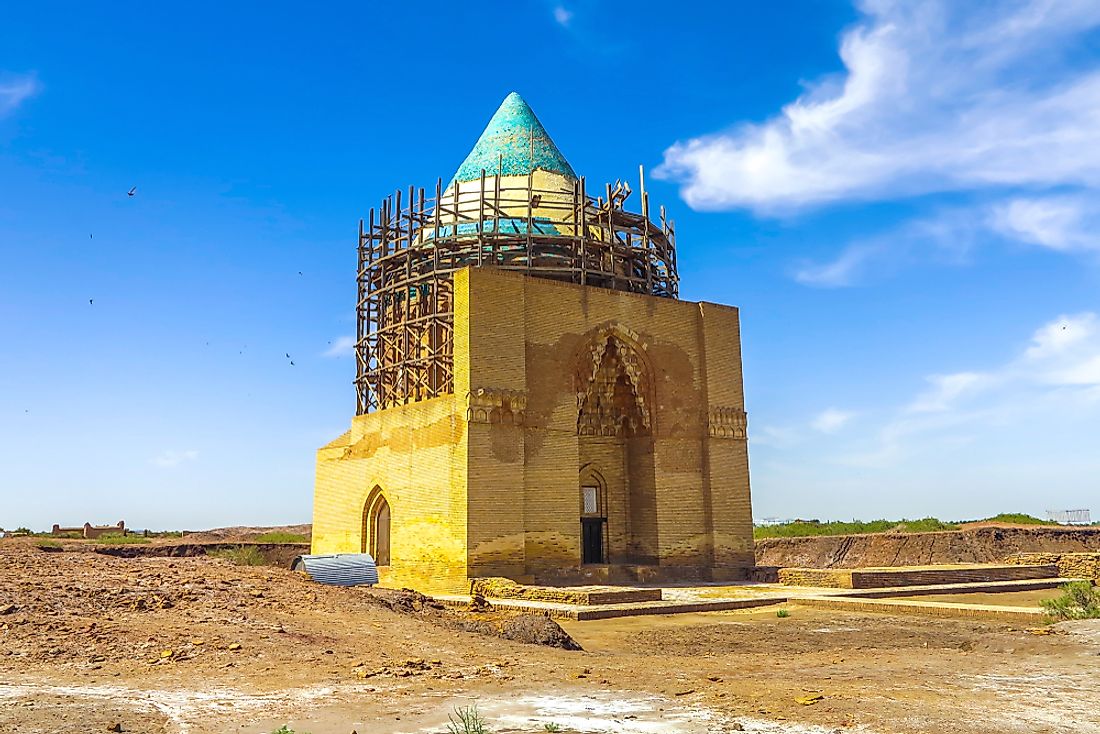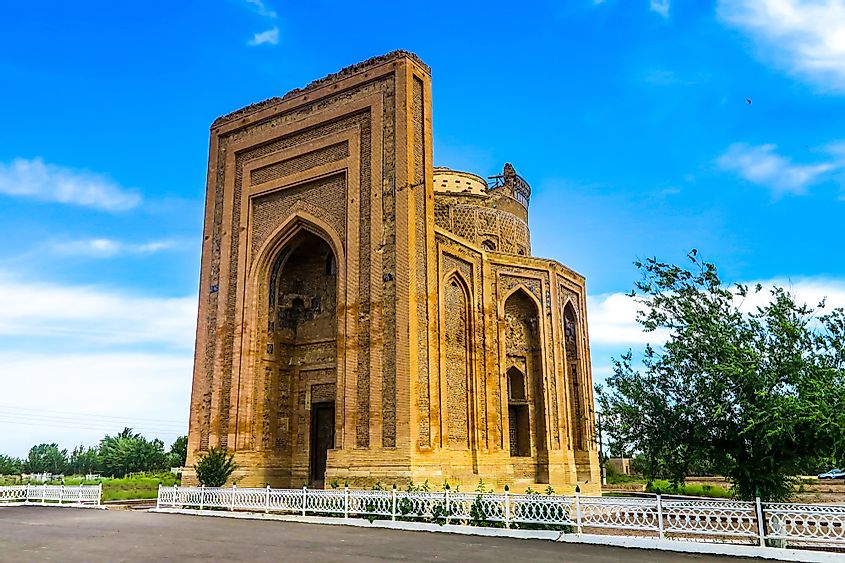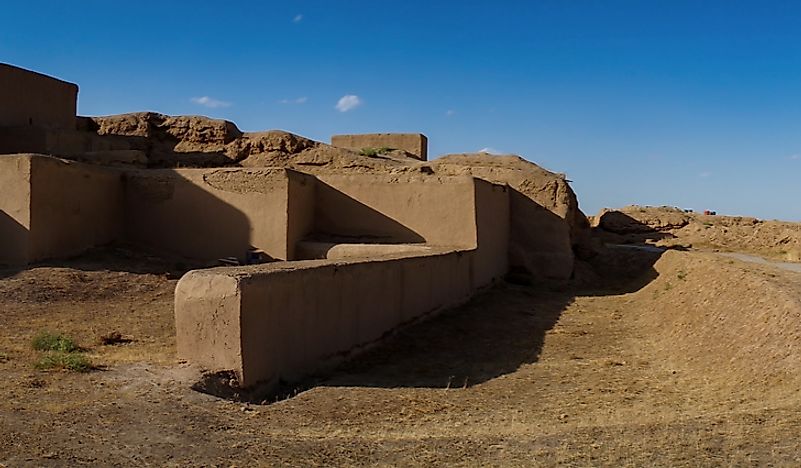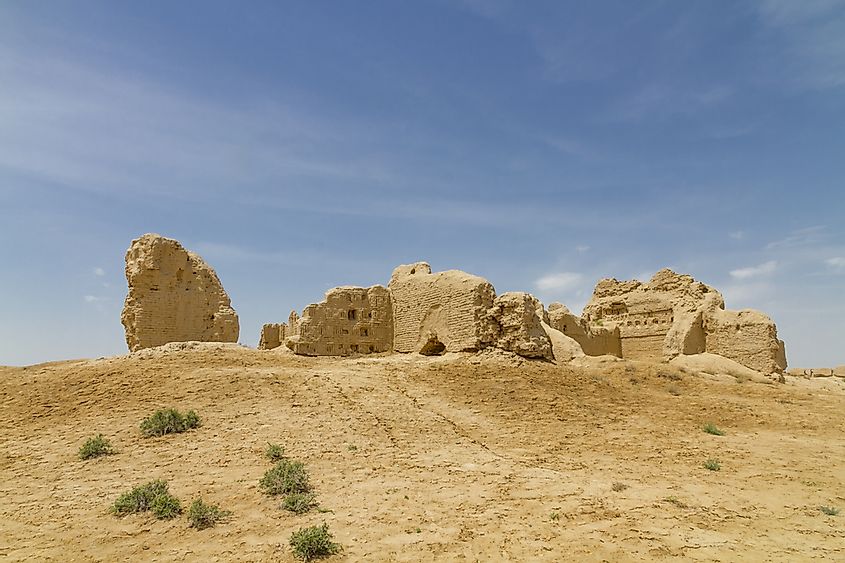UNESCO World Heritage Sites In Turkmenistan

Turkmenistan is a country in Central Asia. It borders Uzbekistan, Afghanistan, Iran, and the Caspian Sea. It has a rich history that dates back to several centuries. The Silk Road, an important international trade route until the 15th century, passed through its territory. There are three UNESCO World Heritage Sites in Turkmenistan: Kenya-Urgench, the Parthian Fortresses of Nisa, and the State Historical and Cultural Park (Ancient Merv).
Kunya-Urgench
The Kunya-Urgench municipality in northern Turkmenistan has a current population of 30,000. The town is home to the Urgench; the ruins of Khwarezm of the Achaemenid Empire. The site has been uninhabited for over three centuries. In 2005, UNESCO named Kunya-Urgench a cultural World Heritage Site. Much of the urban layout of Kunya-Urgench has been lost but the few remaining monuments are authentic and a precious semblance of the elegant architecture and building traditions that existed between the 11th and the 16th century.

The Kutlug-Timur Minaret is the most prominent structure of the site. The monument dates back to the 11th and 12th centuries. The Turabek-Khanum Mausoleum dates backs to the fourteenth century. The structure is located in the northern part of ancient Gurgench. It is a sophisticated piece of work in its beautiful tile decorations, conceptualized spaces, and elegant design.
Parthian Fortresses Of Nisa
Nisa was the ancient capital of Parthia, located 18 km west of Ashgabat. The magnificent ruins of Nisa date back one millennium BC and survived one millennium AD. The fortresses also were the political boundary to the expanding Roman Empire. Its location at the crossroads served as a communication and trading center for the North-south and east-west routes.

Palaces and temple buildings concentrated on Old Nisa. Besides, large wine warehouses and storerooms with numerous ancient stocks are still visible. The site provided burial grounds for the ruling Arsacids dynasties and also as temples where kings held festivals and made sacrifices. UNESCO declared the site a cultural world heritage in 2007. The archeological feature is a clear indication of the Asian culture fused with the Mediterranean. The Parthian Empire was a world power during its reign. It was the most powerful and influential civilization centuries ago, and a vital rival of Rome as its majestic buildings and iron rule made it impossible for the Roman Empire to expand eastwards.
Ancient Merv
Founded in the 6th Century CE, Ancient Merv was one of the most prominent cities on the main routes of the Silk Road of Central Asia. The city developed at the heart of an Oasis and flourished as a trading, military, religious, and communication center and was perhaps the world's 3rd largest city in the 10th century CE. A succession of cities extended to over 1000 ha perfecting the art of trade. In the 7th century, the ancient city became a center for Arab expansion to relieve overcrowding in religious and political discontent areas of Kufa and Basra of southern Iraq. In 740s Baghdad was established as the capital of the Arabian Empire, but Merv remained as the capital of Khurasan. Years of Islamic Sultans followed, and the Kingdom finally fell in the 13th century when the Mongol Empire invaded and massacred people and burned the town to the ground before abandoning it. The scale of destruction and the loss of life were horrific. UNESCO named the site a world cultural heritage in 1999.

UNESCO World Heritage Sites In Turkmenistan
| UNESCO World Heritage Sites in Turkmenistan | Year of Inscription; Type |
|---|---|
| Kunya-Urgench | 2005; Cultural |
| Parthian Fortresses of Nisa | 2007; Cultural |
| Ancient Merv | 1999; Cultural |







